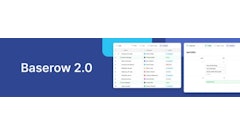
The performance gap between AI leaders and laggards is widening fast with agentic AI emerging as a powerful force shaping future-built companies. Globally, 5% of companies qualify as “future-built” for AI. These firms are at the forefront of AI innovation, systematically building cutting-edge AI capabilities across functions and consistently generating substantial value.
In contrast, 35% (“scalers”) are scaling up their efforts and beginning to generate value, but many of them admit that they could be moving faster.
The remaining 60% of organizations (“laggards”) report minimal revenue and cost gains and don’t yet have the proper capabilities for scaling AI in place, according to The Widening AI Value Gap: Build for the Future 2025, produced by Boston Consulting Group (BCG).
“AI is reshaping the business landscape far faster than previous technology waves,” says Nicolas de Bellefonds, managing director and senior partner and global leader of BCG’s AI efforts, and a co-author of the report. “The companies that are capturing real value from AI aren’t just automating—they’re reshaping and reinventing how their businesses work. And they’re pulling away.”
Key takeaways:
· Future-built firms plan to spend more than twice as much on AI compared to laggards in 2025. As a result of this investment, they expect twice the revenue increase and 40% greater cost reductions than laggards in the areas where they apply AI.
· Analysis shows that compared to laggards, future-built companies achieve substantial value across multiple dimensions, including 1.7 times revenue growth, 3.6 times three-year total shareholder return (TSR), and 1.6 times EBIT margin.
· Agents already account for 17% of total AI value in 2025, and that share is expected to reach 29% by 2028. Agents are playing a key role in expanding the value gap between future-built firms and their slower rivals. Future-built companies allocate 15% of their AI budgets to agents. A third of these firms use agents, compared with 12% of scalers and almost none of laggards.
· AI maturity has advanced across sectors with software, payments and FinTech companies leading the pack. Fashion and luxury, chemicals, and construction remain at the lower end of the AI maturity curve.
· Across sectors, 70% of AI’s potential value is concentrated in core business functions such as sales and marketing, manufacturing, supply chain, and pricing. The big exception is IT, with a 13% share of AI value.





















